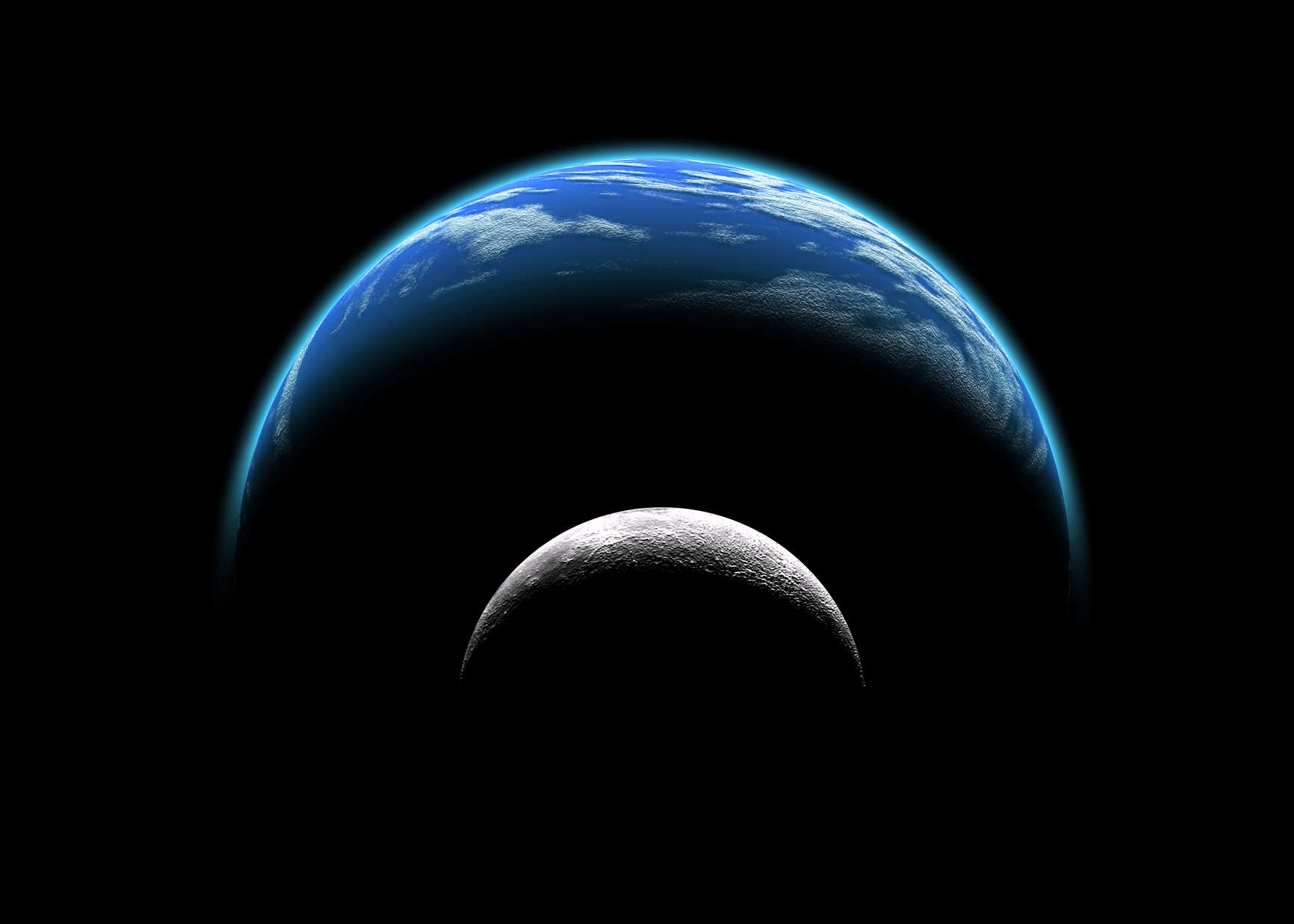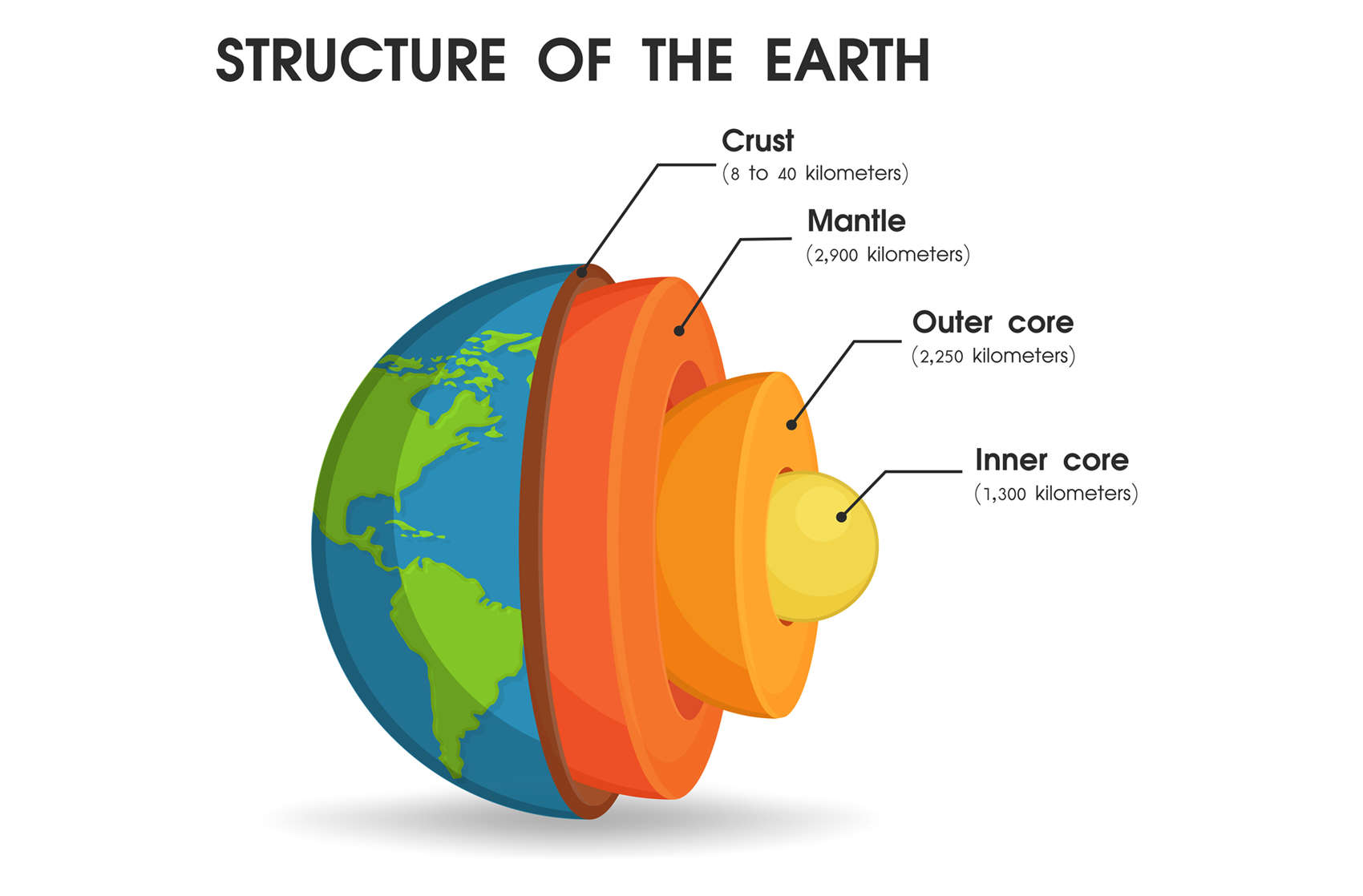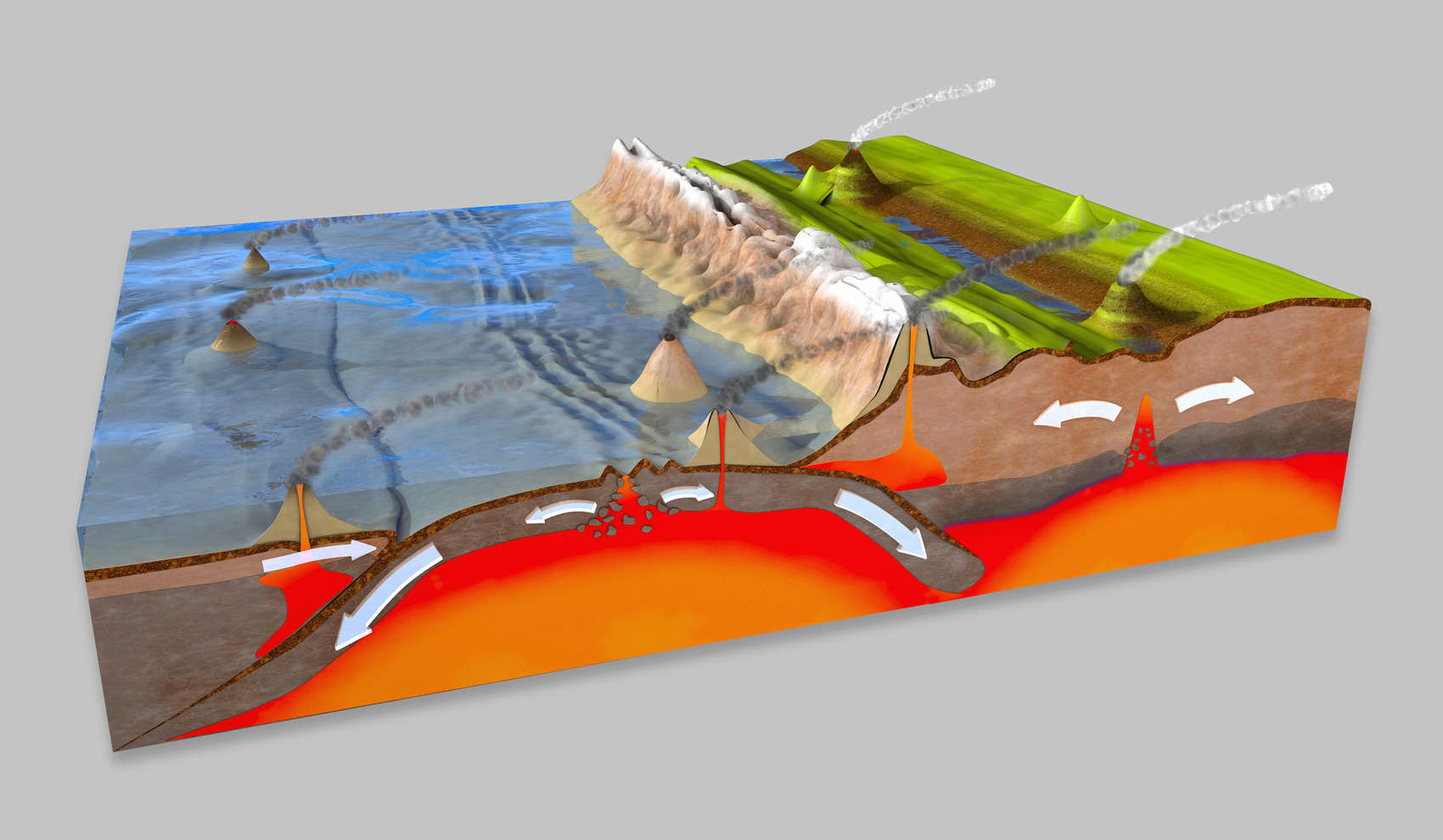Create a free profile to get unlimited access to exclusive videos, sweepstakes, and more!
Was Earth once a water world?

Was the Earth's surface once inundated with water?
Clever new research combining physical models with experiments adds to the growing evidence that billions of years ago the Earth was a water world, covered in twice as much water as it has on the surface now, possibly submerging even the highest peaks.
It's not proof, but things really are starting to line up that this is the case.
The mystery here lies in the Earth's mantle. This is the layer of extremely hot (but not molten!) rock under the relatively thin crust that extends down nearly 3,000 kilometers below the surface, and contains two-thirds of the Earth's mass. The pressure and temperature of the mantle creates minerals not found on the surface, like wadsleyite, ringwoodite, and bridgmanite, which are forms of olivine.
These minerals can store water in their structure, up to roughly 3% of their weight. That may not sound like much, but remember the mantle holds most of the Earth's mass. There's a lot of these minerals down there, and they can hold a lot of water.
The key questions are how much can and do they hold now, and how much could they hold in the past? Experiments have been done to simulate conditions in the mantle, using a diamond anvil to crush mineral powder that is heated to high temperatures and then measured to see how much water the resulting minerals can hold.
The new research looks at how well those minerals can hold water depending on their pressure and temperature, fitting the data with models of how minerals behave. What they found is rather impressive: The Earth's overall mantle can hold 2.3 times the current mass of Earth's surface ocean (they actually found a range of 1.9 to 4.4, with 2.3 being the median value). In other words, if you take all the water on Earth — about 1.4 x1018 tons, 1.4 quintillion tons — the mantle could store over twice that much in its minerals.
It could store that now, that is. In the past the mantle was hotter, and this is where the new research gets interesting. 3-4 billion years ago the mantle was about 300°C hotter than it is now (the current temperature has a range but is roughly 1,300°C). Looking at the experiments and using their models, they find that the hotter minerals can't hold as much water in them. The hotter mantle can only hold 0.52–1.69 times the Earth's current surface water mass, with a median value of about 0.8.
That's significantly less. If the current value for the mantle's water capacity is correct, this implies the mantle in the past couldn't hold as much water as there is in the mantle now. That in turn means the water we see there now has to have come from somewhere.
What they posit is that, eons ago, the Earth's surface used to have a lot more water on it, maybe twice as much as it does now. Water seeping down into cracks in the crust may have weakened the crust, starting plate tectonics for the first time. When one plate slid under another (called subduction) it brought water with it, which was then stored in the mantle. As time went on and the mantle cooled, it was able to hold more and more water (plus as the mantle cools it's easier to form wadsleyite and ringwoodite, so it could soak up even more water). They suppose that over time the mantle sucked down about half the water on the surface, leaving us with what we see today.
Now here's something I didn't know until I read this paper: There is an exchange of water going down into the mantle via subduction and water released from the mantle by volcanoes. The net effect is the loss of surface water down into the mantle, estimated to be to the tune of a billion tons per year! That's rather shocking.
It's equivalent to about a cubic kilometer per year. That may seem like a lot, but it's actually a tiny amount compared to the vast oceans. Still, over a billion years that really adds up. No doubt the net amount has changed over time, but over the life of the Earth this loss is enough to account for the halving of the surface oceans*.
There has been other evidence of the ancient Earth having more water too, including changing isotope ratios and other mineralogical studies (and if this sounds familiar, something similar may have happened to Mars billions of years ago, too).
The idea of a water-laden Earth is certainly an interesting one (and the basis of a movie or two), but it's more than just an idle thought. It could actually change how we think life itself originated! One idea for life's origin is that organic molecules and other material would've been concentrated in tidal pools on land, allowing them to mix together and get more complex, eventually achieving biological status. If there's no land this couldn't have happened. O the other hand this may strengthen the idea that life formed deep underwater by hydrothermal vents, where chemicals and heat spewed out from deep in the crust could do the trick.
Do we owe our existence to a slightly hotter mantle and bizarre minerals like wadsleyite, ringwoodite, and bridgmanite, minerals that were only recently discovered?
It's weird to think that the Earth could be in so delicate a balance, but here we are. Our biosphere is a fragile thing, subject to a myriad of forces that can change it wildly. That is something very important to keep in mind, I think.
*Well, it used to. With global warming melting the ice caps in the Arctic, Antarctic, and Greenland, the ice is adding 150 billion tons of water to the Earth's surface per year on average, far outstripping the loss to the mantle.
















